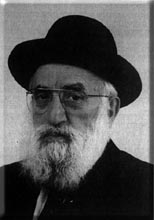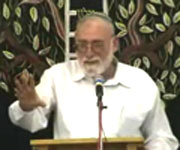Beit Midrash
- Family and Society
- The Jewish Household
- Marriage and Relationships
Chayim and Chani *(all names in this article have been changed) hired a renowned calligrapher to design their kesubah, who was careful to use an approved text. Nevertheless, the kesubah still suffered from severe non-artistic flaws.
Situation #2: Silk-screen
While shopping together before their wedding, Tamar Goldstein and her chosson Avrohom Fishman chose a beautiful silk-screen kesubah without realizing that it was a Sefardic text, which is much lengthier than a standard Ashkenazic kesubah. When the kesubah was filled in, the sections that Ashkenazim do not use were crossed through and the witnesses were instructed to sign.
Situation #3: Standard Hebrew Bookstore
Marcia and Yosef used an inexpensive kesubah for their wedding, but some of the areas were left blank when the kesubah was signed at their wedding.
In some of the above cases, the couple was married without a kosher kesubah, although halacha mandates that a married woman own a kosher kesubah (Shulchan Aruch Even HaEzer 66:3). In all of the above cases, the person supervising the filling in and signing of the kesubah was apparently unaware of the complex laws involved. How to avoid these problems is required reading for anyone planning a wedding.
INTRODUCTION TO THE KESUBAH
The Torah placed many responsibilities on a husband to guarantee his wife security in their marriage. In addition to his requirement to "honor his wife more than himself and love her as much as he loves himself" (Rambam, Hilchos Ishus 15:19), he is also responsible to support her at the financial level she is accustomed to even if he comes from more modest background, and at the comfort level of his family if he comes from a wealthier lifestyle (Kesubos 48a, 61a). His support requirement allows her to devote her energies to maintaining a household and bearing and raising children without assuming responsibility for their daily bread. In return for assuming these responsibilities, her husband may use her earnings and the profits from her property to help support the family, although all property that she owned prior to their marriage or that she inherits during the marriage remains hers. She also has the option of electing to keep her earnings for herself and forego his support (Kesubos 58b, 70b, 83a, 107b).
Furthermore, a husband’s responsibility is not limited to supporting her throughout his lifetime, but includes maintaining her from his property after his passing.
KESUBAH IS A SHTAR
The kesubah is a legally binding pre-nuptial agreement whose purpose is to guarantee a woman's financial welfare upon the termination of the marriage, whether through widowhood or divorce. The kesubah expresses the husband’s fiscal responsibilities to his bride, both during the marriage and upon its termination. The most obvious difference between the Ashkenazic and Sefardic versions is that the Ashkenazic one omits many details specified in the Sefardic text. Although an Ashkenazic husband may specify these obligations in his kesubah, the usual practice is not to.
So far, there seems to be no reason why a Sefardic couple should not use an Ashkenazi kesubah or vice versa. However, there are reasons why a Sefardi couple should not use the standard Ashkenazi kesubah without some modification. The Ashkenazic text states that the kesubah requirement of the husband is min Hatorah, a minority opinion held by Rabbeinu Tam and some others (see Tosafos and Rosh, Kesubos 10a; Shu"t Rivash #66; Shu"t Tashbeitz 2:182; 3:301). Many authorities contend that including this clause invalidates the kesubah (Ramban, Kesubos 110b; Ritva, Kesubos 10a). Since the Rama (Even HaEzer 66:6) justifies Ashkenazim using this kesubah even though many Rishonim question its kashrus, Ashkenazim may continue this practice, whereas Sefardim should not use this kesubah without revising the wording (Shu’t Yabia Omer 3:EH:12). (An Ashkenazi man marrying a Sefardi woman may use an Ashkenazi kesubah, and a Sefardi man marrying an Ashkenazi woman should use a Sefardi kesubah.)
DOCUMENTARY DETAILS
A kesubah must be written following the rules established by Chazal for the creation of any shtar, a halachically-mandated document. One may write it in any language (Gittin 11a), yet the almost-universal practice is to write it in Aramaic, which is written in Hebrew characters and is halachically considered a Hebrew dialect (see Rama, Even HaEzer 126:1).
Anyone may write a kesubah - man or woman, adult or child, Jew or gentile, human or machine. However, two people who have the status of kosher witnesses regarding all Torah laws must sign the kesubah. In addition, the custom in many places is that the groom also signs the kesubah, a practice that dates back to the time of the Rashba (Commentary to Bava Basra 175a s.v. miha).
HALACHIC DETAILS OF WRITING A KESUBAH
The halachos of writing kesubos are manifold. As I mentioned before, the kesubah is a shtar, a halachically binding document. Chazal established very detailed rules how to draw up a shtar so that it cannot be forged or altered. There is a likely chance that someone writing a kesubah who is unaware of these rules will produce an invalid document. It is therefore very important that the kesubah be supervised by someone well-versed in these areas of halacha. Here are some examples of Chazal's regulations:
A shtar may not be written on paper or with ink that can be erased without trace (Gittin 11a; Shulchan Aruch Choshen Mishpat 42:1). One may not write with numerals that can be easily altered; everything in a shtar must be written in a tamperproof way. For example, one must write the word me’ah (hundred) so that it cannot be altered to maasayim (two hundred). This is done by placing the word in the middle of a line, not at the end; and by writing it close enough to the next word so that two letters cannot be inserted between them. Similarly, one may not place the numbers shalosh (three), arba (four), sheish (six), sheva (seven), or eser (ten) in the margin since these numbers can easily be altered (Shulchan Aruch Choshen Mishpat 42:4).
The witnesses must sign the shtar close enough to the text that one cannot insert other conditions or factors above their signature (Shulchan Aruch Choshen Mishpat 44:6, 7). As an additional safeguard, no new conditions or details are derived from the last line of a shtar just in case someone figured out how to sneak a line between the end of the shtar and the witnesses’ signature (see Shach 44:23). For this reason, the last line of every shtar simply reviews the basics of the transaction it attests to; typically, the last line of a standard kesubah simply reviews the names of the bride and groom -- all information previously noted (Choshen Mishpat 44:1). The accepted practice today is to safeguard every shtar in an additional way by closing it with the words hakol shrir vikayom, "and everything is valid and confirmed," since no supplements are allowed after these words.
INITIALING A CORRECTION
In addition to the above examples, a shtar may have no blank spaces, erasures or cross-outs. The common modern practice of modifying a contract by initialing adjustments is halachically unacceptable for a very obvious reason - how does this method guarantee that one party did not tamper with part of the contract already initialed by the other?
CORRECTING A SHTAR
What does one do if one made a mistake while writing a shtar, wants to adapt a standard printed document, or when both parties agree to a modification? Must one dispose of the shtar and start over?
Not necessarily. Halacha accepts the following method of validating corrections. At the end of the shtar, one notes all the erasures and other modifications, closes with the words hakol shrir vikayom and then the witnesses sign the shtar (Choshen Mishpat 44:5, 9). Thus any irregularity is recorded immediately above the witnesses’ signature. If the witnesses mistakenly signed the shtar without verifying its modifications, they should place these modifications directly below their signatures and then re-sign the shtar (Rama, Choshen Mishpat 44:11).
DOES ANY MISTAKE INVALIDATE A SHTAR?
If someone wrote a shtar and did not follow Chazal’s instructions, is the kesubah valid? The Rishonim dispute whether the shtar is still valid, some contending that any shtar that does not follow Chazal’s rules is invalid. Both the Shulchan Aruch and the Rama conclude that the shtar it is still legitimate, although the Rama rules this way only when it is quite clear that the shtar has not been tampered with (Choshen Mishpat 44:1, 5).
INCORRECT CORRECTION
I was once at a wedding where the couple had purchased a beautiful specially-designed kesubah. While reading the kesubah before the wedding, someone noticed an error in the text of the kesubah. Can one correct this text immediately before the wedding ceremony? Fortunately for this couple, the mesader kiddushin (the rabbi overseeing the ceremony) admitted that he did not know the correct procedure for correcting text in a shtar, and instead presented them with a kosher, although far less beautiful, kesubah, saving the artistic one as a beautiful memento. Had he attempted to correct the kesubah, they may have spent their married lives without a kosher kesubah!
One prominent Rosh Yeshiva I know will not be mesader kiddushin. He unabashedly tells his talmidim that he has never had the opportunity to study the laws of documents thoroughly and therefore he is not qualified. He arranges that a prominent talmud chacham is mesader kiddushin in his stead. I give him much credit, and consider his behavior worthy of emulation.
ILLEGIBILITY
Often, the names in a kesubah are written illegibly. These kesubos are invalid since it must be clear who are the marrying parties using this kesubah.
At this point, we can already appreciate the problems that happened to the above-mentioned kesubos:
Chayim and Chani’s calligrapher used an approved text for the kesubah. Nevertheless, the kesubah still suffered from severe flaws - several words were written in ways that they could be altered, numbers were placed at the end of the line in a way that they could be modified, and too much space was left in the middle of some lines. The result was a beautiful piece of art, but not a properly written kesubah.
Tamar chose a beautiful Sefardic kesubah, which itself does not present a problem provided that it was either fully filled out or that the corrections were noted at the end. However, the person filling out the kesubah simply crossed out the remaining sections of the kesubah, and then instructed the witnesses to sign. If it was indeed obvious that these parts of the kesubah were not tampered with after the signing, the kesubah is kosher even though it was not filled in correctly (see Shulchan Aruch, Choshen Mishpat 44:5). However, he should have noted at the end of the kesubah which lines were crossed through and have the witnesses sign below this declaration.
What about using a standard printed kesubah?
If a standard kesubah is arranged properly, it will reduce the incidence of many of the above-mentioned problems, but it is by no means foolproof. I have seen numerous standard kesubos improperly filled out, and there are standard kesubos that have mistakes, such as placing certain information in the margin and leaving too much space between the kesubah and where the witnesses are expected to sign.
Situation #3:
Marcia and Yosef used an inexpensive kesubah for their wedding, but some areas were still blank when it was signed at their wedding.
Obviously, one may not use a kesubah without filling in all blank spaces, since someone could subsequently tamper with the document. If areas were left blank without omitting vital information from the kesubah, then whether the kesubah is kosher or not depends on the above-mentioned dispute between the Shulchan Aruch and the Rama. Sefardim who follow the Shulchan Aruch may assume that the kesubah is kosher notwithstanding its flaws, whereas Ashkenazim must replace this invalid kesubah as quickly as possible.
A CORRECTED KESUBAH
What does one do if after reading this article, one checks one’s kesubah and discovers that it has one of the above-mentioned fatal flaws?
Don’t panic. Simply contact a locally available talmid chacham, telling him that you suspect your kesubah may be invalid. He will check it and rule whether it requires replacing or not. One should not replace a kosher kesubah, but an invalid one must be replaced. There is a special text to be used when replacing an invalid kesubah, called a kesubah dimishtakich bei ta’usa, a kesubah in which a mistake was found, that is used in these circumstances. The talmid chacham fills in the corrected kesubah, which is then signed by two witnesses and given to the wife. If a reader needs a copy of this text, I can send them a copy via e-mail.
(Similarly, if a woman has misplaced her kesubah, the couple should have it replaced immediately. Replacing a lost kesubah is a simple procedural matter that takes a matter of minutes and should not involve any major costs. Speak to your local posek. Similarly, a couple who were not married originally in a halachic fashion and are now observant need to obtain a valid kesubah.)
WRONG LOCATION
By the way, datelining a kesubah with the wrong location does not invalidate it (Choshen Mishpat 43:22). Thus, it is not of the highest importance to determine the exact legal location of a hotel or hall where a wedding is located.
INCORRECT SPELLING
Halacha has extensive rules how to spell names, yet I have seen many kesubos with the names misspelled. Fortunately this rarely invalidates a kesubah, and one should not rewrite the kesubah of a married couple because of this mistake.
FAMILY NAMES
Many contemporary authorities feel that family names should be included in the kesubah. In fact, whether one does or not is usually dependent on local custom.
A HUMOROUS ERROR
The kesubah states that the husband will support his wife bikushta, faithfully, with the "t" sound spelled with the Hebrew letter tes. I once saw a kesubah where the scribe misspelled the word with the letter taf, and therefore the word translates as "with a bow," thus committing the groom to support his wife "with the bow." For her sake, I hope that he was an expert archer or violinist. Fortunately, this kesubah is kosher even if the groom is as talented in these areas as I am.
As we see, writing a kesubah correctly requires extensive halacha knowledge of the laws of documents, an area not as well known as it should be. Without question, this is the most common cause of so many people having invalid kesubos.
Many people place much effort into obtaining a beautiful kesubah, with stunning artwork and calligraphy -- Indeed there is nothing wrong with enhancing the kesubah this way. But one must be careful that, whether beautiful or not, the kesubah fulfills its purpose as a proper shtar. After all, a non-kosher kesubah is not worth the paper on which it is written.
This Shiur is published also at Rabbi Kaganof's site
Jewish Weddings
Rabbi Berel Wein zt"l | 5769
























